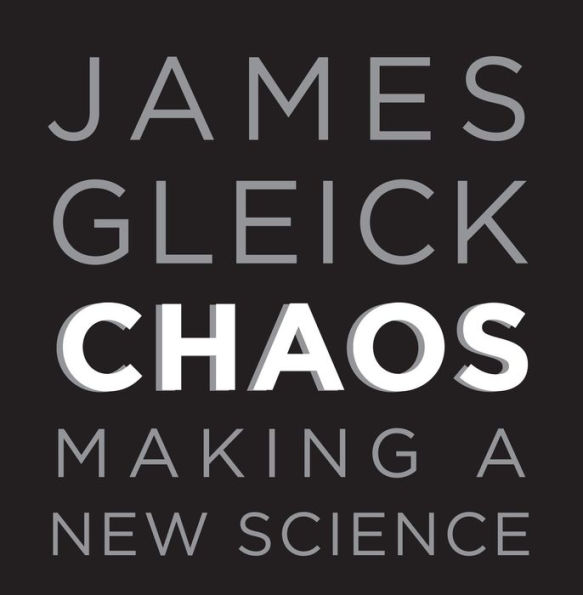DECEMBER 2011 - AudioFile
The author explores a little-known area of science called chaos theory, which demands that scientists take a giant leap of faith to study a discipline that makes the unpredictable predictable. Rob Shapiro’s deep voice and enthusiastic tone strike a balance between being serious but not staid, listenable but not cartoonish. His voice provides added accessibility to a difficult topic. But this is highly advanced stuff. While only a few, brief mathematical formulas are included, the focus is on the science, not the personal stories of the scientists. The presentation would be best for those who are intrigued with exploring the world of fractals and bifurcations—or those with a modicum of scientific curiosity. M.B. © AudioFile 2011, Portland, Maine
Publishers Weekly - Publisher's Weekly
Science readers who have gone through relativity theory, quantum physics, Heisenbergian uncertainty, black holes and the world of quarks and virtual particles only to be stunned by recent Grand Unified Theories (GUTS) will welcome New York Times science writer Gleick's adventurous attempt to describe the revolutionary science of chaos. ``Chaos'' is what a handful of theorists steeped in math and computer know-how are calling their challengingly abstract new look at nature in terms of nonlinear dynamics. Gleick traces the ideas of these little-known pioneersincluding Mitchell Feigenbaum and his Butterfly Effect; Benoit Mandelbrot, whose ``fractal'' concept led to a new geometry of nature; and Joseph Ford who countered Einstein with ``God plays dice with the universe. But they're loaded dice.'' Chaos is deep, even frightening in its holistic embrace of nature as paradoxically complex, wildly disorderly, random and yet stable in its infinite stream of ``self-similarities.'' A ground-breaking book about what seems to be the future of physics. Illustrations. QPBC alternate. (October 20)
The New York Times
Fascinating . . . almost every paragraph contains a jolt.
The New York Times Book Review
Taut and exciting . . . a fascinating illustration of how the pattern of science changes.
Chicago Tribune
Highly entertaining . . . a startling look at newly discovered universal laws.
Library Journal
Chaos-theory, touted as the third revolution in 20th-century science after relativity and quantum mechanics, uses traditional mathematics to understand complex natural systems with too many variables to study. Philosophically, it counters the Second Law of Thermodynamics by demonstrating the ``spontaneous emergence of self-organization.'' In this new science apparent disorder is meaningful; the structure of chaos can be mapped by plotting graphically the calculations of nonlinear mathematics using ``fractal'' geometry, a brainchild of Benoit Mandelbrot in which symmetrical patterns repeat across different scales. With jocular descriptions of eccentric characters such as the ``Dynamical Systems collective,'' (a.k.a. Chaos Cabal) of the University of CaliforniaSanta Cruz, Chaos offers an absorbing look at trailblazers on a new scientific frontier. Laurie Tynan, Montgomery Cty.-Norristown P.L., Pa.
Booknews
Reissue of the 1987 Viking ed. Annotation c. Book News, Inc., Portland, OR (booknews.com)
From the Publisher
Finalist for the Pulitzer Prize
“Fascinating . . . almost every paragraph contains a jolt.” —The New York Times
“Taut and exciting . . . a fascinating illustration of how the pattern of science changes.” —The New York Times Book Review
“Highly entertaining . . . a startling look at newly discovered universal laws.”—Chicago Tribune
“An awe-inspiring book. Reading it gave me that sensation that someone had just found the light switch.” —Douglas Adams, author of The Hitchhiker’s Guide to the Galaxy
“Chaos is a feast.” —The Washington Post Book World
DECEMBER 2011 - AudioFile
The author explores a little-known area of science called chaos theory, which demands that scientists take a giant leap of faith to study a discipline that makes the unpredictable predictable. Rob Shapiro’s deep voice and enthusiastic tone strike a balance between being serious but not staid, listenable but not cartoonish. His voice provides added accessibility to a difficult topic. But this is highly advanced stuff. While only a few, brief mathematical formulas are included, the focus is on the science, not the personal stories of the scientists. The presentation would be best for those who are intrigued with exploring the world of fractals and bifurcations—or those with a modicum of scientific curiosity. M.B. © AudioFile 2011, Portland, Maine



